
John Kemp was a medieval English cardinal, Archbishop of Canterbury, and Lord Chancellor of England.

William of Wykeham was Bishop of Winchester and Chancellor of England. He founded New College, Oxford, and New College School in 1379, and founded Winchester College in 1382. He was also the clerk of works when much of Windsor Castle was built.
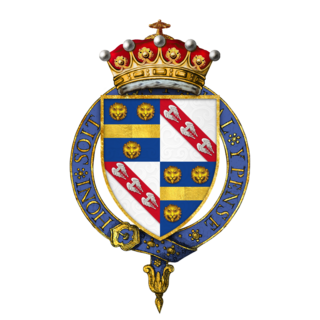
William de la Pole, 1st Duke of Suffolk,, nicknamed Jackanapes, was an English magnate, statesman and military commander during the Hundred Years' War. He became a favourite of the weak king Henry VI of England, and consequently a leading figure in the English government where he became associated with many of the royal government's failures of the time, particularly on the war in France. Suffolk also appears prominently in Shakespeare's Henry VI, parts 1 and 2.
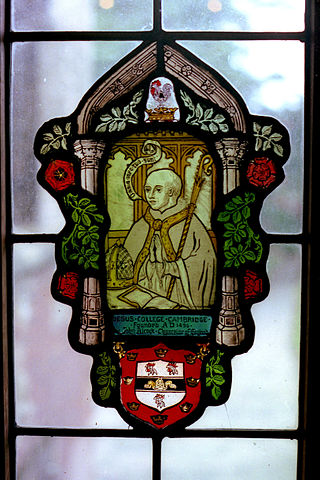
John Alcock was an English churchman, bishop and Lord Chancellor.

Walter Langton of Castle Ashby in Northamptonshire, was Bishop of Coventry and Lichfield and King's Treasurer. The life of Langton was strongly influenced by his uncle William Langton, Archbishop of York-elect, by Robert Burnell, Lord Chancellor of England and then by the years in which he served King Edward I. Lichfield Cathedral was improved and enriched at his expense.

John de la Pole, 2nd Duke of Suffolk, KG, was a major magnate in 15th-century England. He was the son of William de la Pole, 1st Duke of Suffolk, and Alice Chaucer, the daughter of Thomas Chaucer. His youth was blighted, in 1450, by the political fall and subsequent murder of his father, who had been a favourite of king Henry VI but was increasingly distrusted by the rest of the nobility. Although the first duke of Suffolk had made himself rich through trade and – particularly – royal grants, this source of income dried up on his death, so John de la Pole was among the poorest of English dukes on his accession to the title in 1463. This was a circumstance which John felt acutely; on more than one occasion, he refused to come to London due to his impoverishment being such that he could not afford the costs of maintaining a retinue.
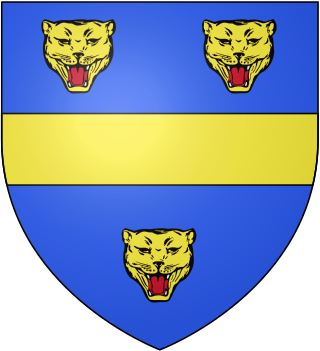
Michael de la Pole, 1st Earl of Suffolk, 1st Baron de la Pole, of Wingfield Castle in Suffolk, was an English financier and Lord Chancellor of England. His contemporary Froissart portrays de la Pole as a devious and ineffectual counsellor who dissuaded Richard II of Englandfrom pursuing a certain victory against French and Scottish forces in Cumberland and fomented undue suspicion of that king's uncle John of Gaunt, 1st Duke of Lancaster.

William de Redvers, 5th Earl of Devon, of Tiverton Castle and Plympton Castle, both in Devon, was feudal baron of Plympton in Devon.

Ravenser Odd, also spelled Ravensrodd, was a port in the East Riding of Yorkshire, England, during the medieval period, built on the sandbanks at the mouth of the Humber estuary.

Ravenspurn was a town in the East Riding of Yorkshire, England, which was lost due to coastal erosion, one of more than 30 along the Holderness Coast which have been lost to the North Sea since the 19th century. The town was located close to the end of a peninsula near Ravenser Odd, which had been flooded in the 14th century. The peninsula still survives and is known as Spurn Head. The North Sea lies to the east of the peninsula, the Humber estuary to the west.

John (III) de Mowbray, 4th Baron Mowbray was an English peer. He was slain near Constantinople while en route to the Holy Land.

Nicholas Carew, of Beddington in Surrey, was an English lawyer, landowner, courtier, administrator and politician who served as Keeper of the Privy Seal during the reign of King Edward III.
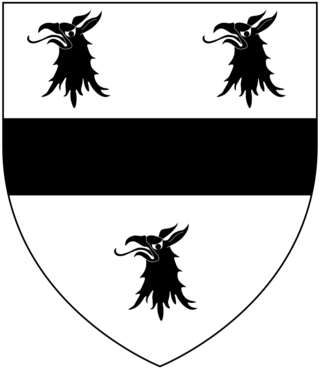
John Hales was Bishop of Coventry and Lichfield (1459-1490). He was one of the Worthies of Devon of the biographer John Prince (d.1723).

Sir Thomas Potter was an English industrialist and Liberal politician, and the first Mayor of Manchester.
The surname Pole usually derives from "Pool", a person associated with a body of water.

Richard Potter (1778–1842) was a radical non-conformist Liberal Party MP for Wigan, and a founding member of the Little Circle which was key in gaining the Reform Act 1832.

The Charterhouse was a Carthusian monastery and almshouse in Kingston upon Hull, England, built just outside the town's walls. The hospital building survived the Dissolution of the Monasteries; the priory was destroyed in 1538. The structure of the hospital was destroyed before the first siege of Hull during the English Civil War. A replacement was built in 1645, which was replaced again in 1780; the buildings function as an almshouse with an attached chapel, and remain in use to the present day (2012).
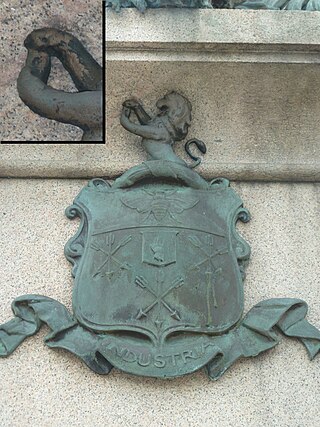
Robert "Parsley" Peel was a British cotton mill owner and grandfather to Sir Robert Peel, 2nd Baronet, future prime minister of the United Kingdom. Peel started life as a yeoman farmer but experimented with calico printing, eventually creating a parsley leaf pattern which would become his trademark. Despite losing a number of machines during riots, Peel's company became the largest in the textile sector by the time of his death, with 23 factories.

The landed gentry and nobility of Devonshire, like the rest of the English and European gentry, bore heraldic arms from the start of the age of heraldry circa 1200–1215. The fashion for the display of heraldry ceased about the end of the Victorian era (1901) by which time most of the ancient arms-bearing families of Devonshire had died out, moved away or parted with their landed estates.






















